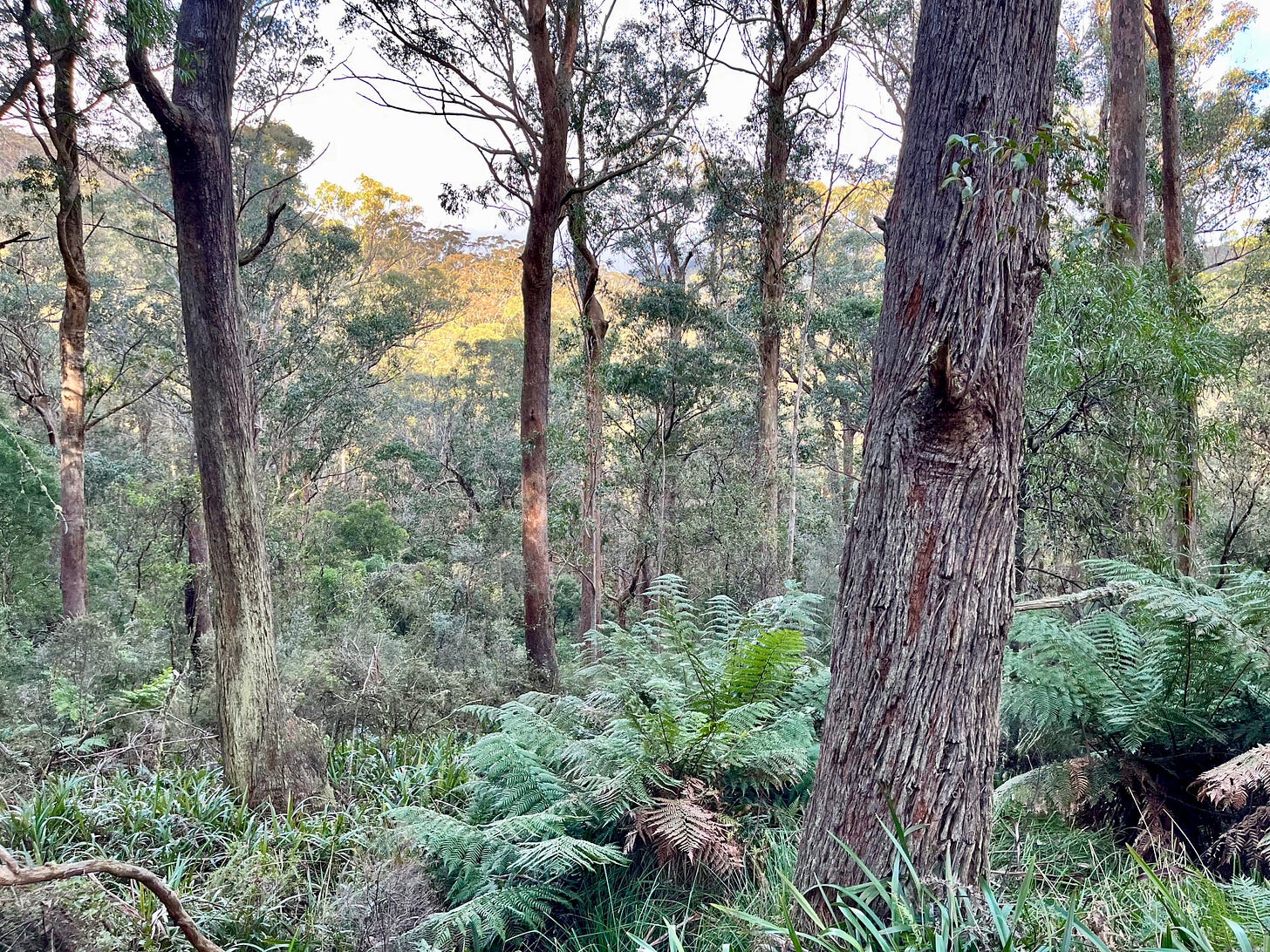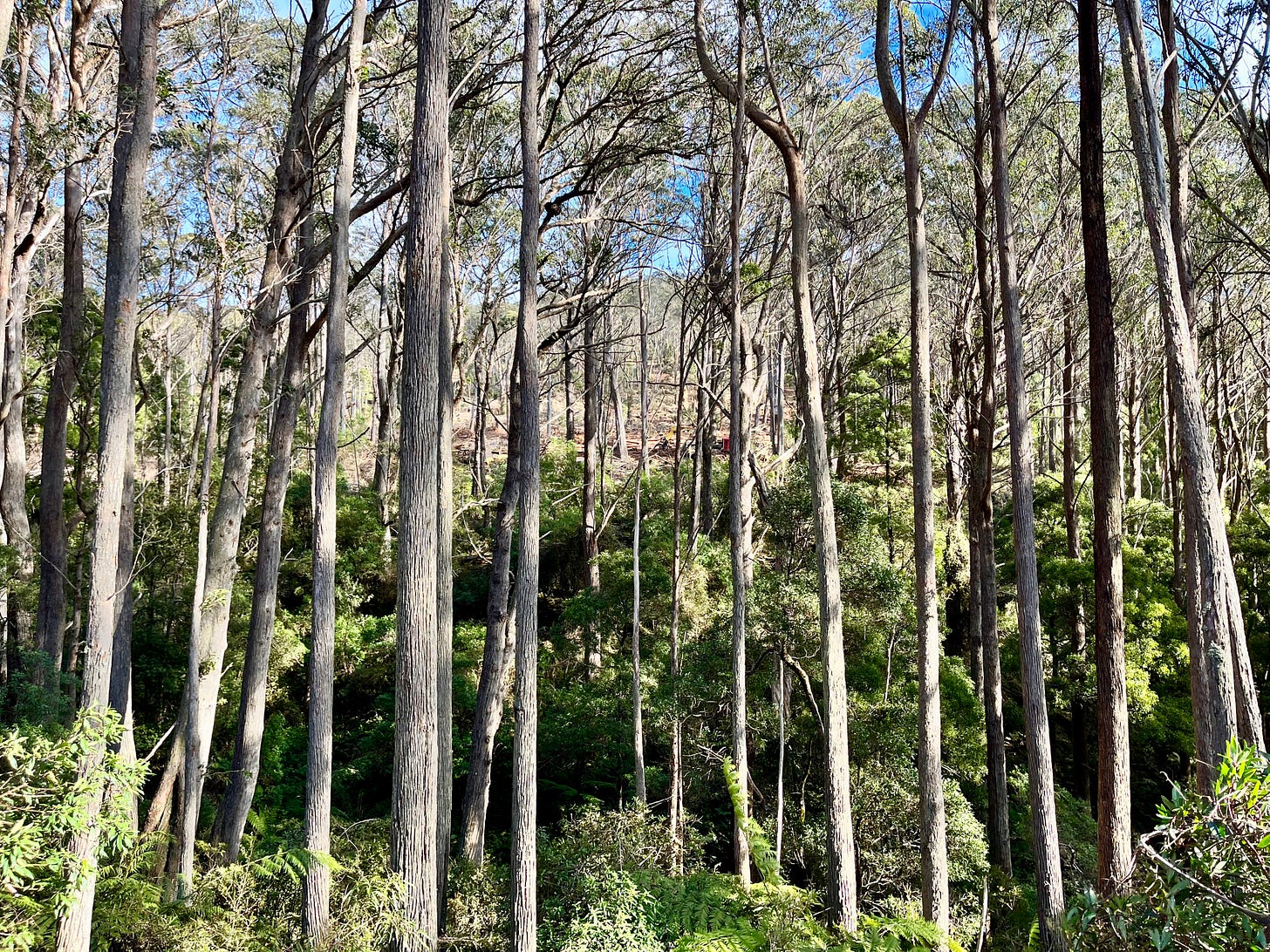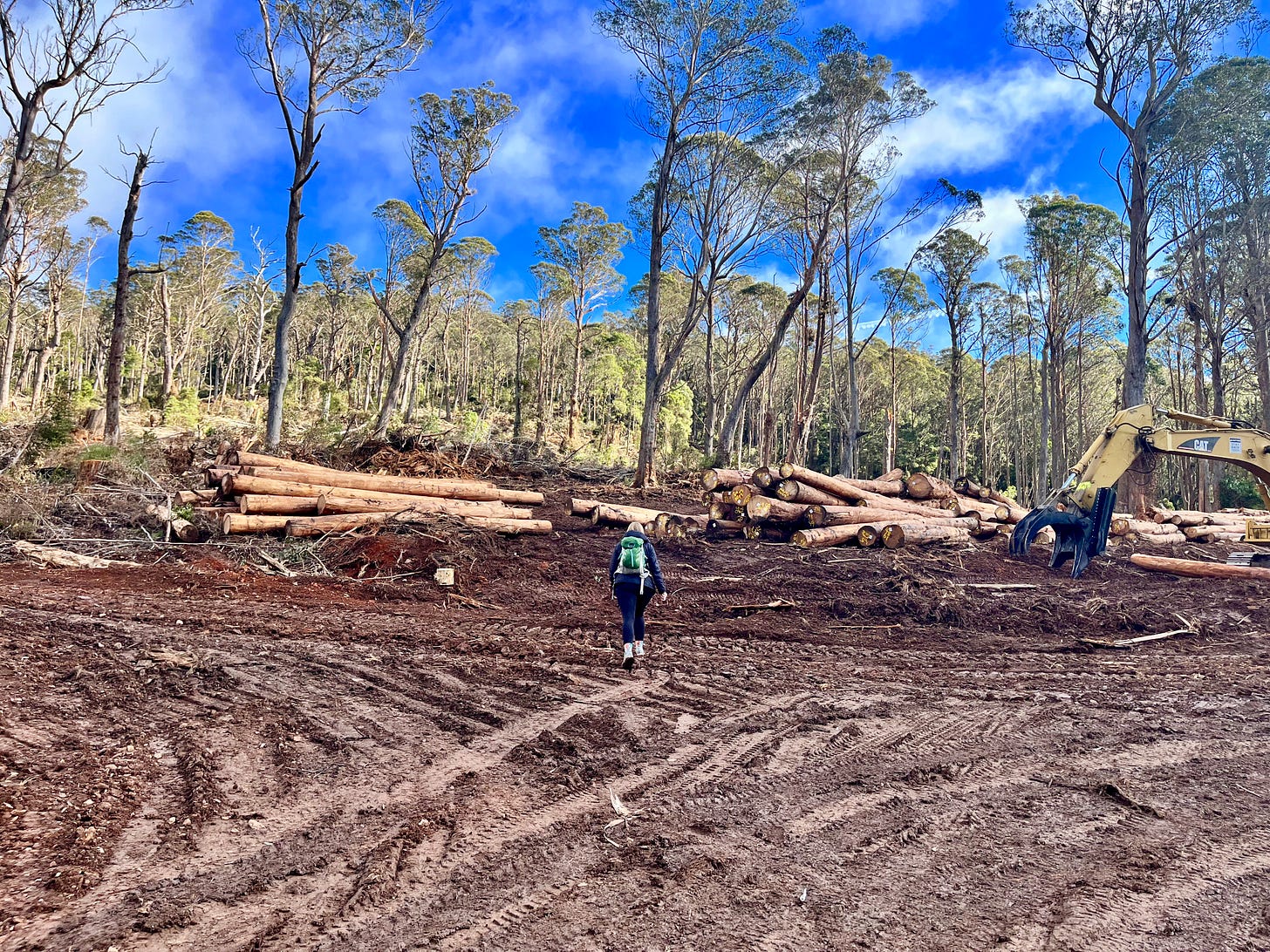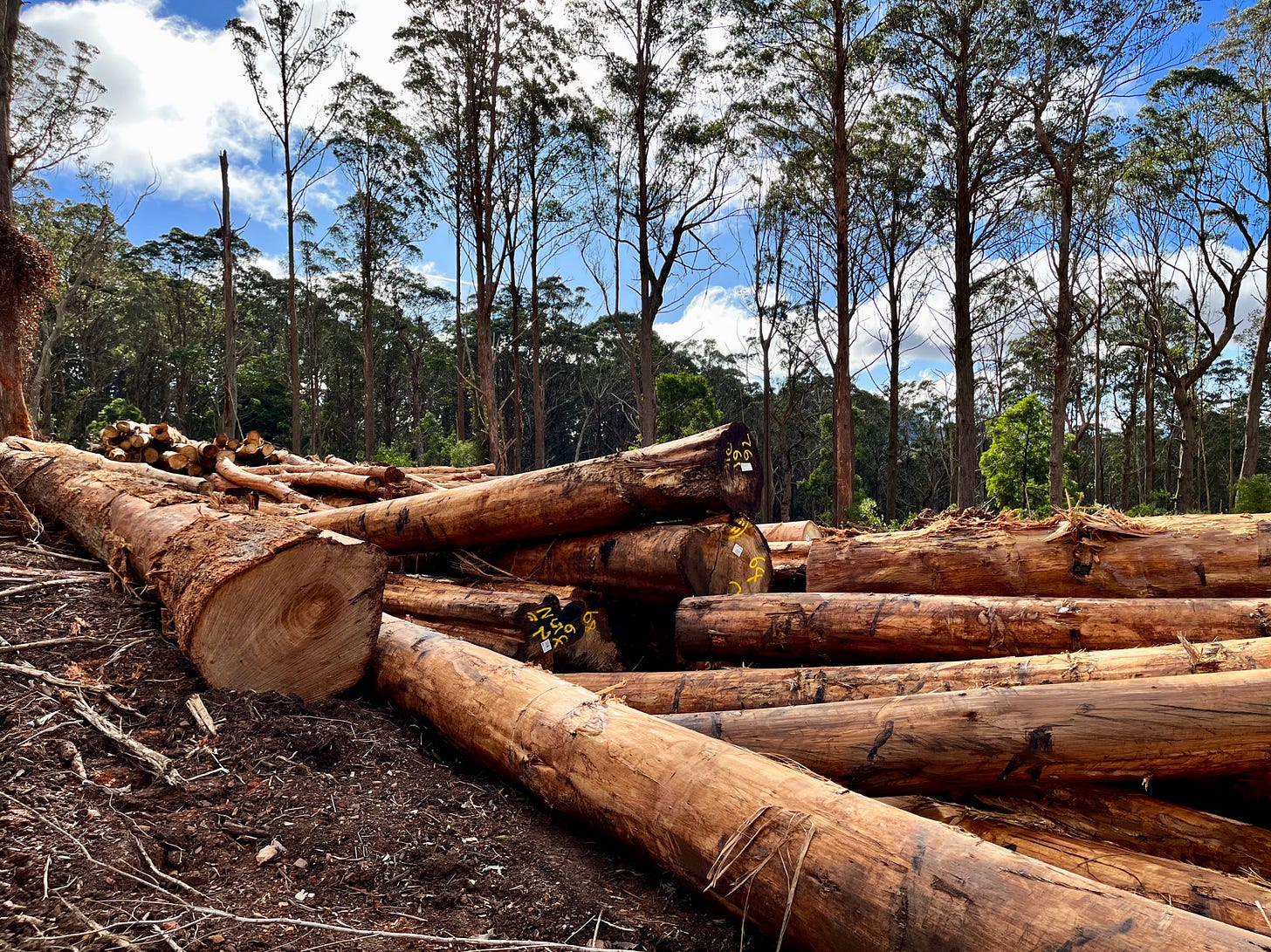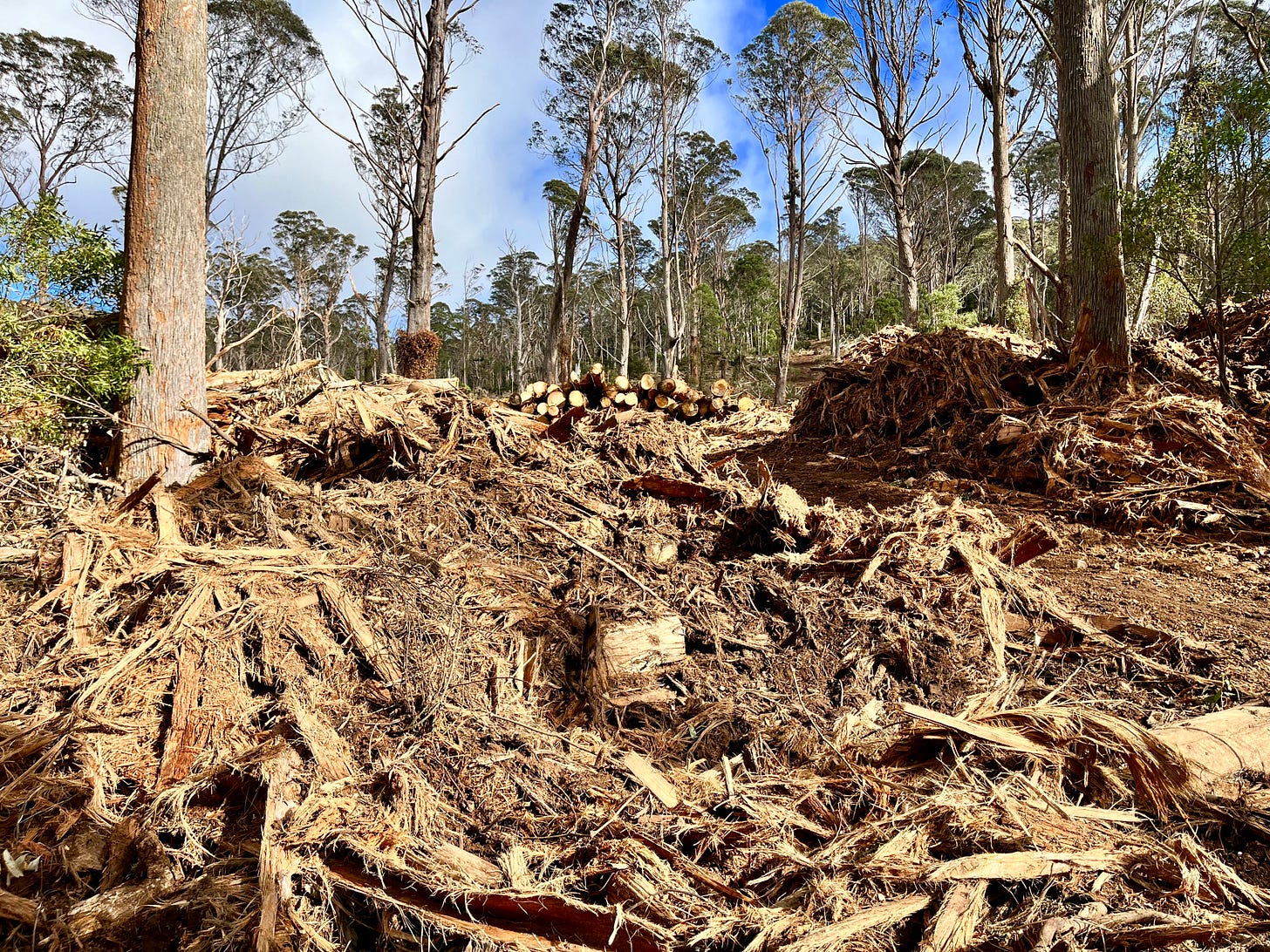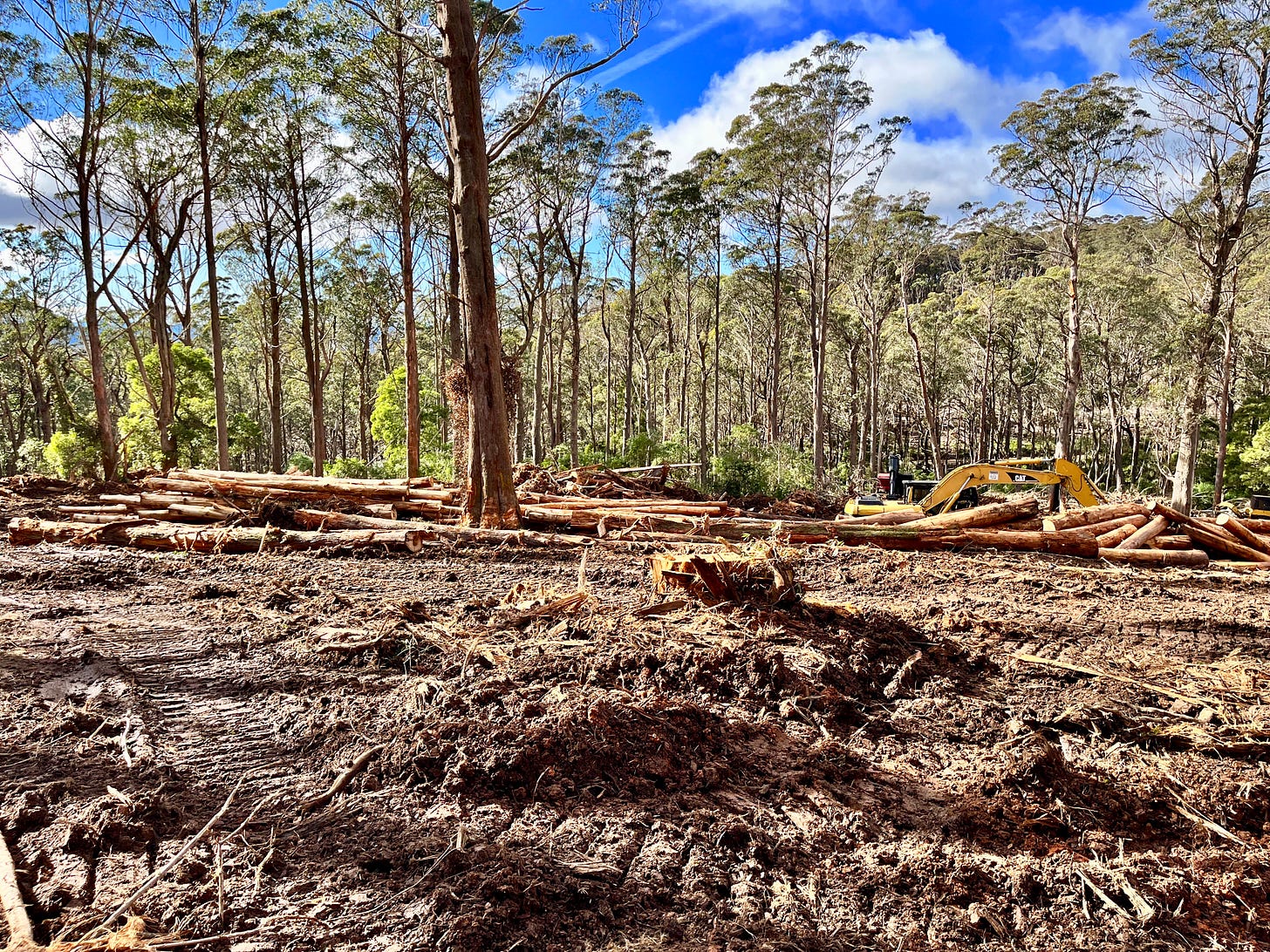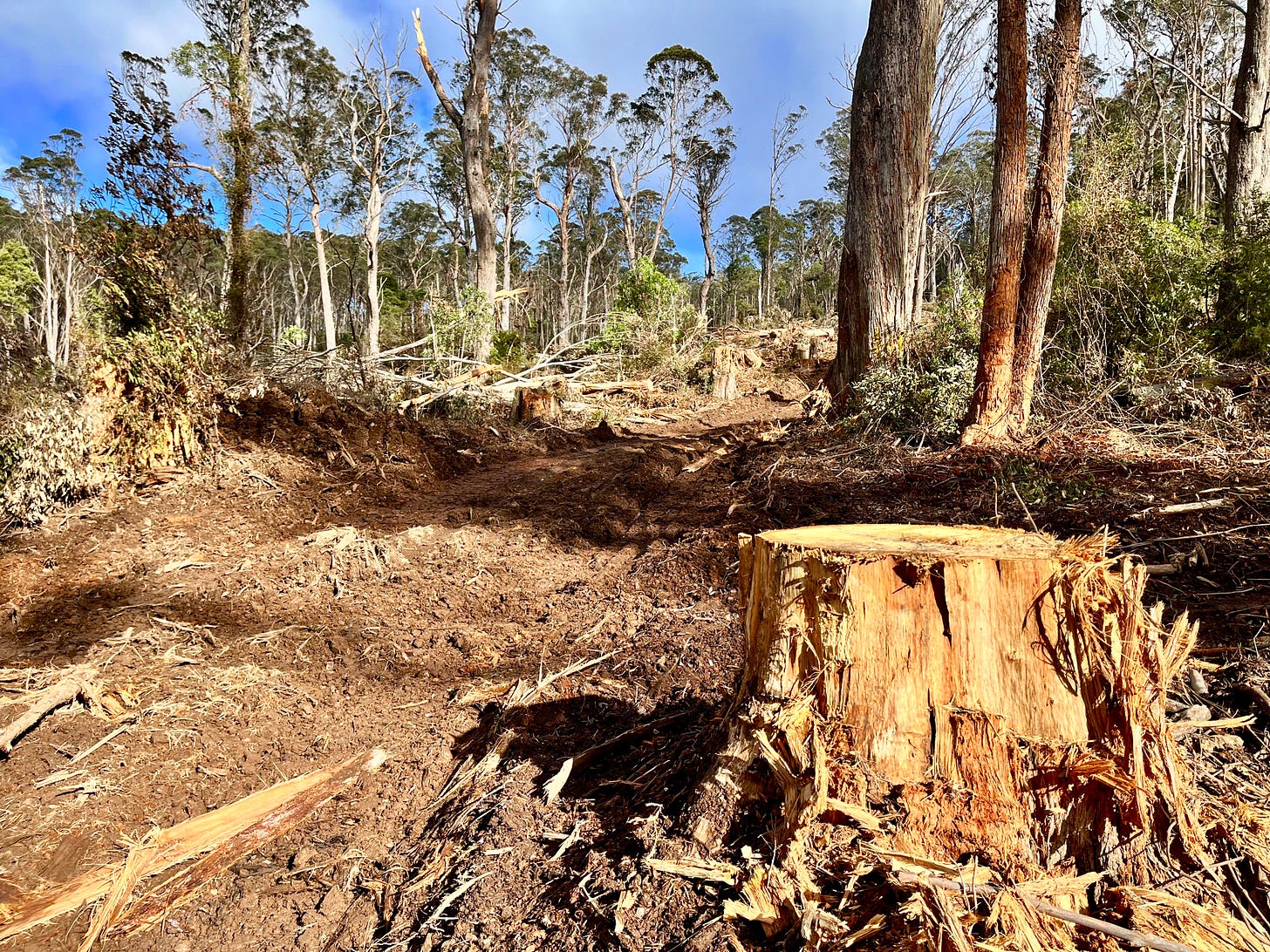Exploring logging compartments in Tallaganda State Forest
By Courtney Bright
Note: Views expressed in this article are my own and do not represent the views of any organisation I’m connected to.
I’ve spent a lot of time exploring logging compartments over the last year, in both Tallaganda State Forest and Bondo State Forest near Canberra. For this article, I’m casting my mind back to my very first visit in June 2023.
I was becoming familiar with native forestry practices in Victoria but didn’t know how NSW compared. The Forestry Corporation of NSW website describes their operations as sustainable. For example:
“We manage forests sustainably, so they remain healthy and productive today and continue to regrow and thrive for the future.” [1]
“Forestry Corporation is certified to the Australian Standard for Sustainable Forest Management, Responsible Wood.” [1]
“We are passionate about the forest environment and before we harvest a single tree, professional ecologists survey the wildlife, birdlife and vegetation in the area to identify threatened species and ensure the forest retains the conditions they need to thrive.” [2]
So with an open mind, I found the publicly-available harvest plans for the active logging compartments in Tallaganda State Forest, mapped out a route, and invited some interested friends to join me for a hike.
Into the forest
We started our hike on South Forest Way, a few kilometres north of the logging compartment. The forest was beautiful. After parking my friend’s somewhat conspicuous Tesla, we were greeted with the sound of a local lyrebird*.
Approaching the logging compartment
We eventually caught glimpses of cleared forest and logging machinery through the trees. I think this part of the story is best told with photos.
It’s hard to describe how I felt seeing this destruction in person for the first time. It was confronting. I remember feeling as though I had a big lump in my chest. The logged sections were noticeably hot, dry, and sunny compared to the dense forest we’d walked through. You could still hear birds calling but it was much quieter. Robins flitted through piles of stripped bark. The bulldozed paths seemed to extend in all directions. Overwhelmed, I wanted to zoom out and see the forest from above.
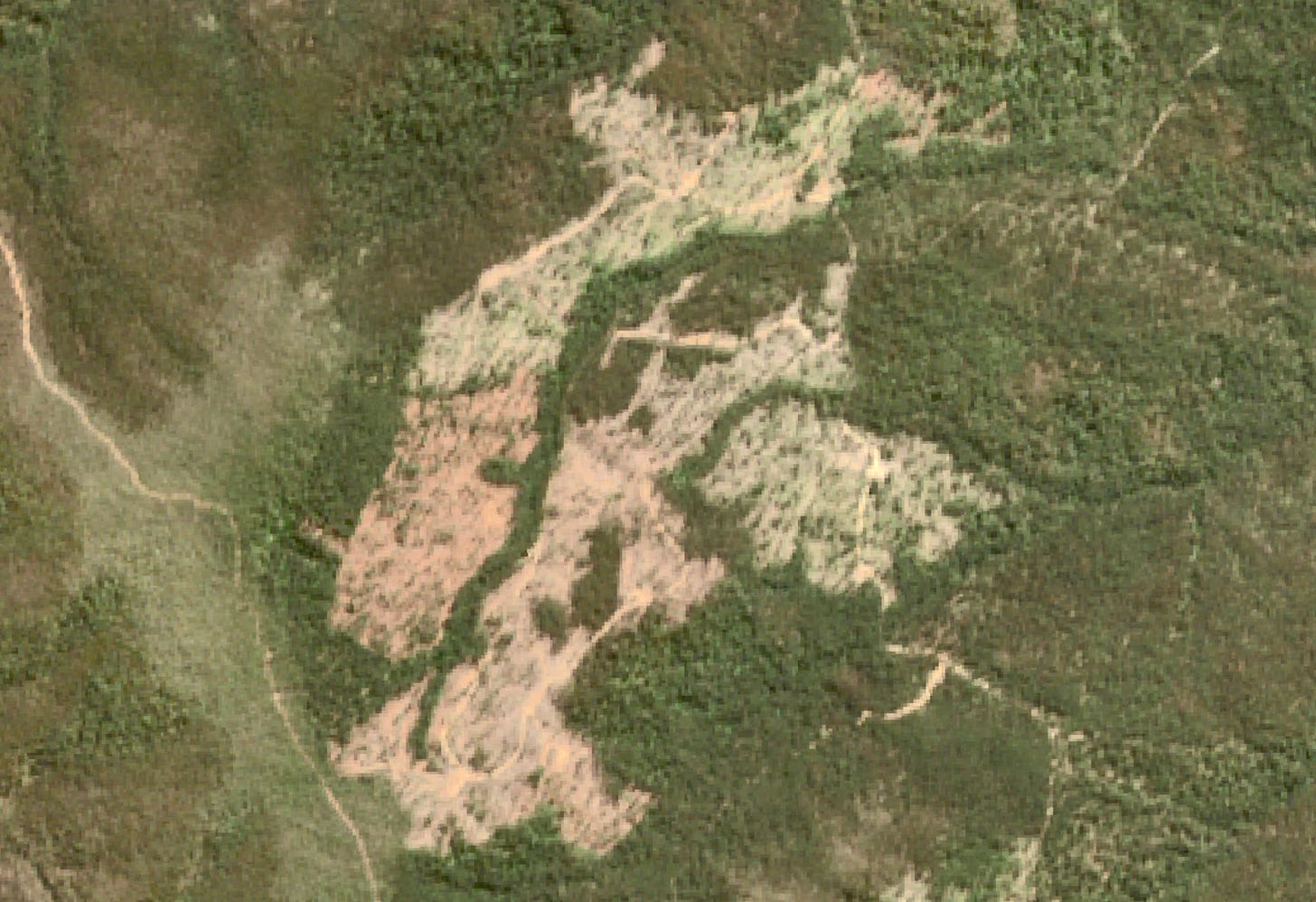
We can do better
In NSW this is classed as “selective harvesting”[4]. When I imagined what “selective harvesting” might look like before this hike, this isn’t what I pictured. 7,500 cubic meters of timber were approved for removal from this compartment, with 47% as “high quality sawlog”, 13% “low quality sawlog”, 27% pulp, and 13% firewood [3]. These numbers don’t account for the biomass left on the ground.
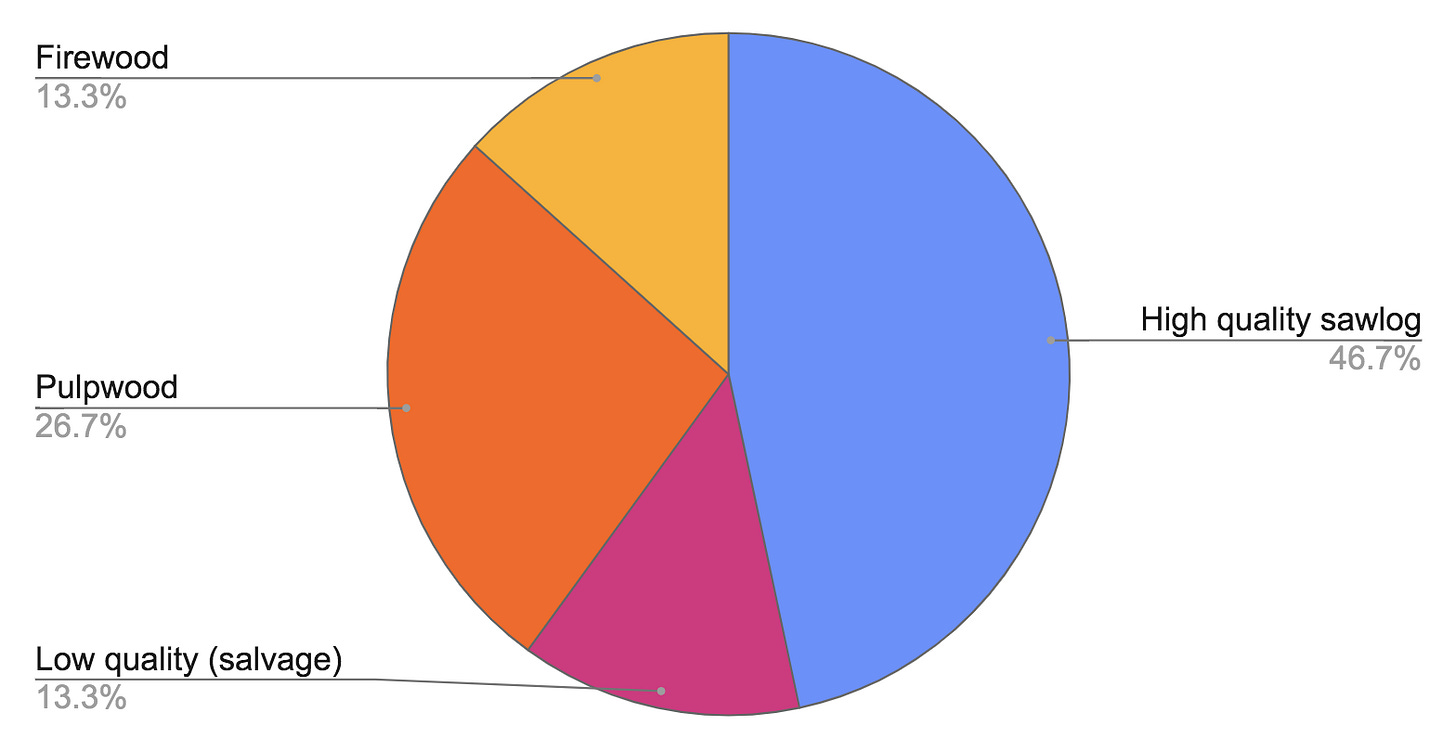
Forestry Corporation identified this compartment as known or potential habitat for eight threatened species, three of which are endangered nationally—greater gliders, spotted-tailed quolls, and gang-gang cockatoos. Let’s recall the description of this process published on their website:
“We … survey the wildlife, birdlife and vegetation in the area to identify threatened species and ensure the forest retains the conditions they need to thrive.” [2]
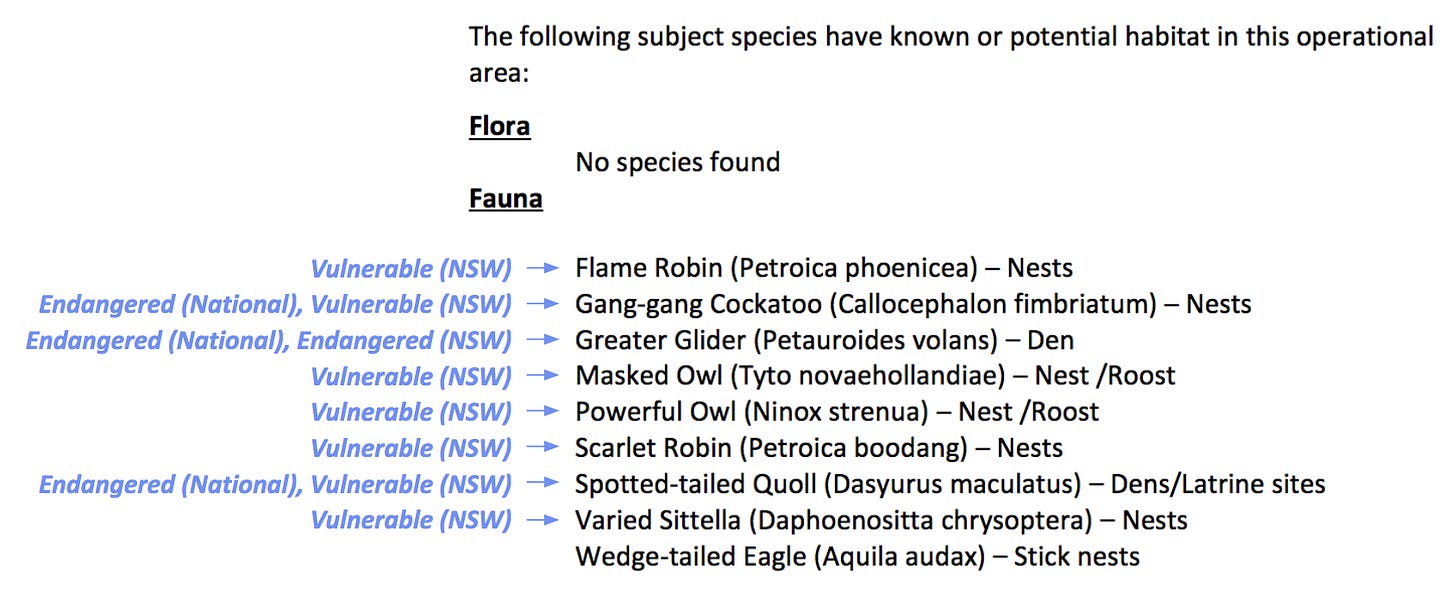
I know that humans need timber and paper, and people rely on this industry for their jobs. But these are not unsolvable problems. As a species we’ve developed a COVID-19 vaccine in less than a year, sequenced the human genome, and landed rovers on Mars. Call me an optimist, but I’m confident we can find a way to meet our resource needs without sacrificing critical habitats, and compassionately transition the affected workforce to plantation forestry or forest restoration.
Confronting reality and finding adventure
My first hike through a logging compartment was confronting, but also fun. It felt like an adventure to explore and learn about a new place—the good parts and the bad—with an amazing group of friends. Most of all, after spending so many years feeling depressed about the state of the environment, it felt good to be finally doing something. To expose myself to reality and speak up instead of turning a blind-eye. I couldn’t wait to come back again.
A lot has happened in Tallaganda since this hike, but that’s for a future post. We also have something exciting happening on June 1st—stay tuned!
* Full disclosure: at the time I didn’t know this was a lyrebird call, but I’ve since discovered NatureMapr and become slightly addicted to it. It’s a website and app where you can upload photos and audio recordings of plants and critters, and expert moderators identify them for you. The biodiversity information is then available in various decision-making databases used by government, land managers, and researchers. It’s very cool.
References
[1] Forestry Corporation of NSW (2024) Sustainability. Available at https://www.forestrycorporation.com.au/sustainability (Accessed 28 April 2024).
[2] Forestry Corporation of NSW (2024) Ecology. Available at https://www.forestrycorporation.com.au/sustainability/forest-research (Accessed 28 April 2024).
[3] Forestry Corporation of NSW (2022) Tallaganda SF Cpts 2447A to 2450A Harvesting & Roading Plan Public Version 2. Available at: https://planportal.fcnsw.net/plan/13df2e3c-1b9e-42d2-8b2a-146cbe7ca7a7 (login required but free and easy to create an account).
[4] NSW Environment Protection Authority (2018) Timber Harvesting Limits. Available at: https://www.epa.nsw.gov.au/-/media/epa/corporate-site/resources/forestagreements/factsheet-proposed-changes-to-timber-harvesting.pdf (Accessed 28 April 2024).

